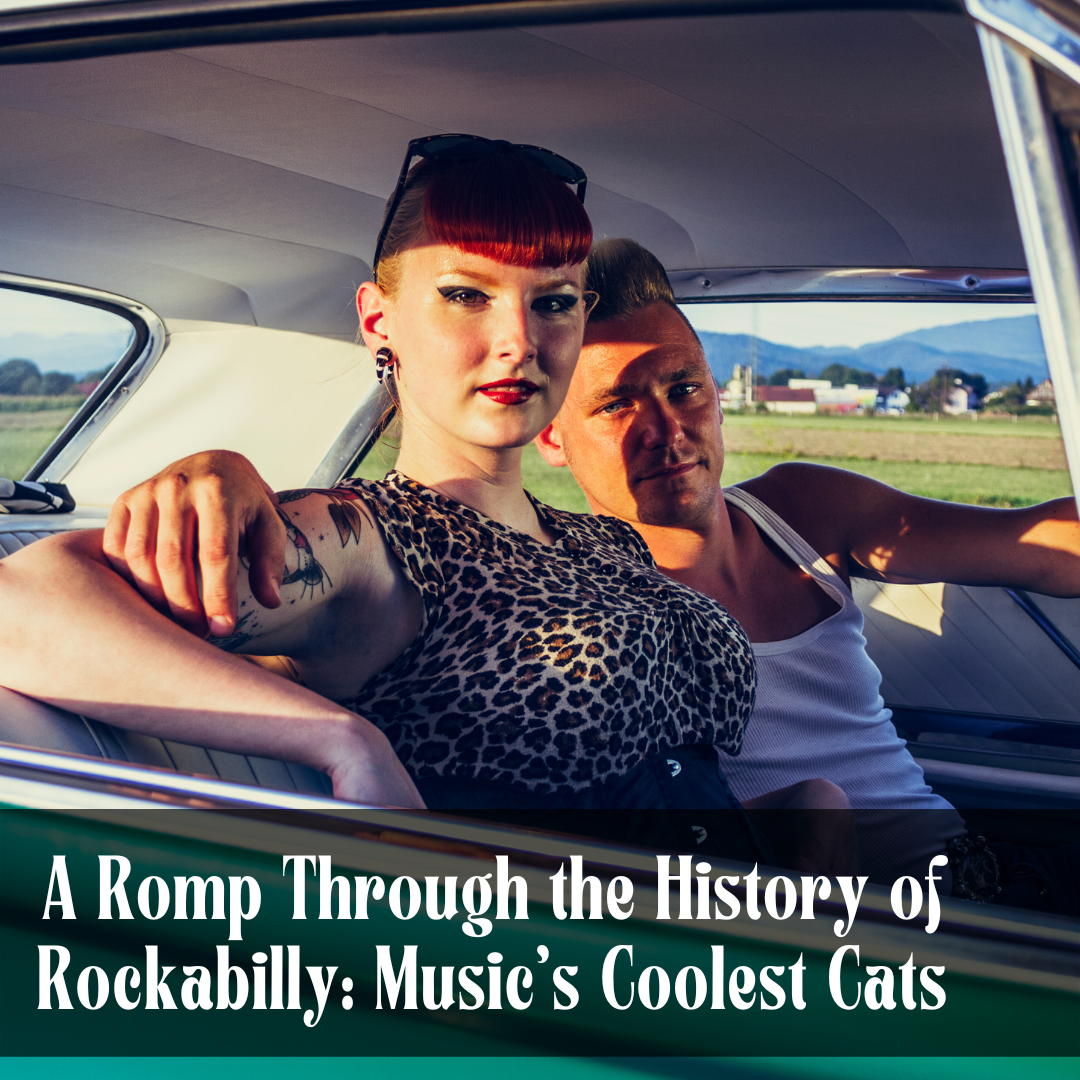Hey there, all you cool cats and kittens! Buckle up, because we’re about to take a wild ride through the history of rockabilly, one of the most vibrant and electrifying music genres to ever strut its stuff on the scene. From its rebellious roots to its worldwide influence, rockabilly has captured hearts, minds, and tapping toes for decades. So, grab your pomade and lace up your creepers, as we delve into the world of twangy guitars, rollicking rhythms, and sultry vocals that define the rockabilly sound.
Picture it: the 1950s, when post-war America was abuzz with newfound freedom, prosperity, and a restless energy. The youth, fueled by this newfound liberation, were eager for something new, something that would set them apart from their buttoned-up parents. Enter rockabilly, a sizzling fusion of blues, country, and rhythm & blues that burst onto the scene like a cherry bomb in a sock hop.
At the epicenter of it all was Sun Records in Memphis, Tennessee, where producer Sam Phillips was on the hunt for a sound that could bridge the gap between black and white audiences. Phillips struck gold with a young, hip-swiveling, and scandalously sexy Elvis Presley, who combined his love for gospel, blues, and country to create a whole new sound that became the blueprint for rockabilly.
With Elvis setting the stage, other artists quickly hopped on the rockabilly train. Jerry Lee Lewis, Carl Perkins, and Johnny Cash – who would later become the legendary “Million Dollar Quartet” – were also recording at Sun Records, each adding their own unique flavor to the rockabilly gumbo. Perkins’ “Blue Suede Shoes” and Lewis’ “Whole Lotta Shakin’ Goin’ On” captured the essence of the genre: rebellious, wild, and undeniably catchy.
Rockabilly’s influence quickly spread beyond the borders of the United States. European artists like Cliff Richard and Vince Taylor drew inspiration from their American counterparts, while Eddie Cochran and Gene Vincent gained popularity on both sides of the pond.
The cool cats of rockabilly also had a look to match their sound. They sported leather jackets, cuffed jeans, and pompadours, while the ladies rocked circle skirts, crinolines, and bright red lipstick. Rockabilly fashion became synonymous with the rebellious spirit of the era, inspiring future generations of subcultures and style enthusiasts.
As the 1960s rolled in, rockabilly’s initial fire cooled down, with artists like The Beatles and The Rolling Stones dominating the airwaves. However, the genre refused to go quietly into the night. The late 1970s and early 1980s saw a resurgence in rockabilly, with bands like The Stray Cats and The Cramps breathing new life into the genre. The revival continued into the 1990s and 2000s with acts like Brian Setzer Orchestra and Reverend Horton Heat, proving that rockabilly’s spirit was far from dead.
Today, rockabilly continues to be celebrated and enjoyed by fans around the world. Festivals like Viva Las Vegas and The Hemsby Rock ‘n’ Roll Weekender are dedicated to keeping the spirit of rockabilly alive, showcasing live music, vintage fashion, and a love for all things retro.
The history of rockabilly is a testament to the power of music to inspire and bring people together. Born from the rebellious spirit of the 1950s, rockabilly remains a vibrant and beloved genre, continuing to captivate and entertain audiences across generations.

